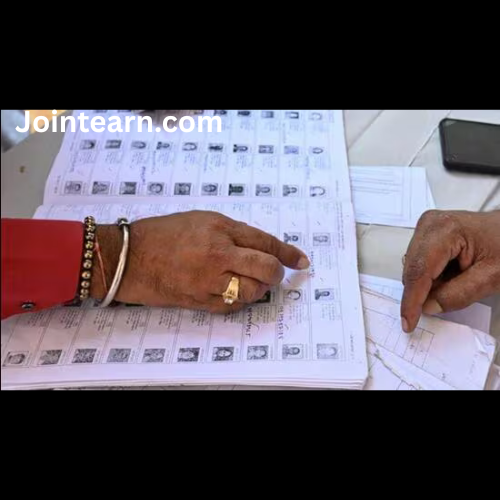Published: November 14, 2025, 7:13 PM IST
Patna: While the Bihar Assembly elections of 2025 ended in a landslide victory for the Nitish Kumar-led NDA, the results revealed pockets of intense competition where the contests were won by the narrowest of margins. Amid widespread success for the ruling alliance, several constituencies saw nail-biting finishes that kept voters and candidates on edge until the very last round of counting.
The NDA, led by Chief Minister Nitish Kumar, emerged dominant in the 243-member assembly, leading in 202 seats, while the Mahagathbandhan faced a heavy defeat, managing only 34 seats. The BJP emerged as the largest party with 92 seats, closely followed by JD(U) with 83, while the RJD, which had projected itself as the main challenger, managed just 26 seats.
Despite these decisive victories, the elections were far from uniform. While some BJP and JD(U) candidates won by massive margins—Rama Nishad in Aurai triumphed by 52,817 votes, and Nitish Mishra in Jhanjharpur won by 52,490—the picture was dramatically different in a number of constituencies where the margins were razor-thin, highlighting the competitive nature of local politics.
In at least 14 seats across Bihar, the margin between the winning candidate and the runner-up was less than 1,000 votes, with one seat decided by a mere 27 votes. These results underscored how every vote mattered, and how even a small swing could have changed the outcome in these constituencies.
The Nine Closest Fights
- Agiaon (Arrah) – Mahesh Paswan of the BJP narrowly edged out his rival from the Communist Party of India (Marxist-Leninist) by just 95 votes, in a contest marked by frequent shifts in early trends and a high-stakes local campaign.
- Bodh Gaya – RJD’s Kumar Sarvjeet secured a tight win over LJP (Ram Vilas) candidate Shyamdeo Paswan by 881 votes. Bodh Gaya, famous as a pilgrimage site, saw voters divided between loyalty to the RJD and the appeal of LJP’s local campaign.
- Chanpatia (West Champaran) – Congress candidate Abhishek Ranjan defeated BJP’s Umakant Singh by 602 votes, illustrating how Congress pockets in Bihar still retain competitive strength despite the broader NDA wave.
- Forbesganj – Another closely fought seat saw Congress’s Manoj Bishwas narrowly defeating BJP’s Vidya Sagar Keshari by just 221 votes, highlighting the unpredictability of local electoral dynamics.
- Goh (Aurangabad) – RJD’s Amrendra Kumar managed a slim victory over BJP’s Dr. Ranvijay Kumar by 767 votes, in a constituency that reflected the continued presence of the party’s base even amid statewide setbacks.
- Jehanabad – Rahul Kumar of RJD triumphed over JD(U)’s Chandeswhar Prasad by a mere 255 votes, making it one of the most closely watched battles of the day and demonstrating the fine margins that defined certain opposition victories.
- Sandesh (Arrah Lok Sabha constituency) – JD(U)’s Radha Charan Sah fought off RJD’s Dipu Singh in a contest that was decided by a razor-thin margin of just 27 votes, one of the closest in the entire state.
- Bakhtiarpur – LJP (Ram Vilas) candidate Arun Kumar edged past RJD’s Aniruddh Kumar by 981 votes, reinforcing the LJP’s strategic local influence in key constituencies.
- Ramgarh – BSP’s Satish Kumar Singh Yadav narrowly defeated BJP’s Ashok Kumar Singh by 175 votes, in a testament to the volatility and multiparty competition in certain Bihar constituencies.
What These Close Contests Reveal
The narrow margins in these constituencies highlight a few critical trends in Bihar politics. First, despite the NDA’s landslide at the state level, local factors, candidate profiles, and historical party loyalties played a decisive role in many seats. Second, opposition parties, while suffering overall losses, retained competitive footholds in several areas, signaling that the political map of Bihar cannot be viewed solely through state-level outcomes.
These close races also underscore the importance of voter mobilization and campaigning at the micro level. In seats like Sandesh, where the winning margin was only 27 votes, a small difference in voter turnout or party strategy could have flipped the result. For political analysts, such contests provide insight into voter behaviour, the role of local issues, and the continued influence of regional parties in shaping Bihar’s political landscape.
Conclusion
While the 2025 Bihar Assembly elections will be remembered primarily for the NDA’s sweeping victory and the Mahagathbandhan’s setback, the razor-thin wins in constituencies like Sandesh, Jehanabad, and Bodh Gaya remind observers that electoral outcomes are often decided on the finest margins. These contests highlight the vibrancy of Bihar’s democracy, where every vote can determine the future of local leadership and the representation of communities in the state assembly.
Even in an election dominated by a wave for the ruling alliance, the state’s political tapestry remains complex, with pockets of intense competition, closely fought battles, and local dynamics that could influence future elections. For political parties and candidates, these constituencies offer both lessons and opportunities, emphasizing that even in landslide elections, no seat can ever be taken for granted.


Leave a Reply